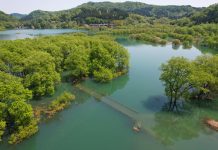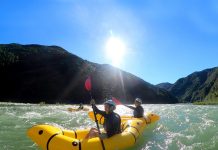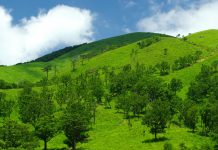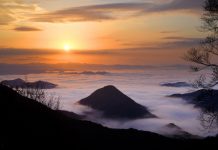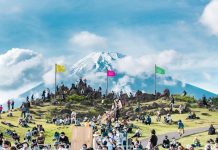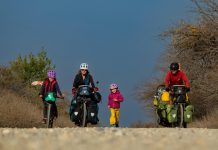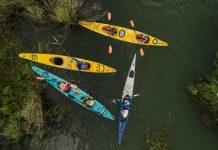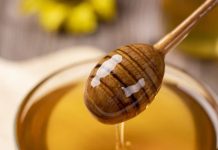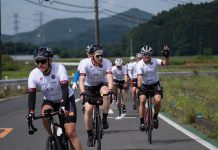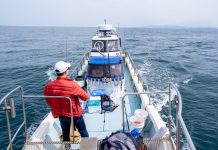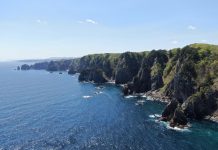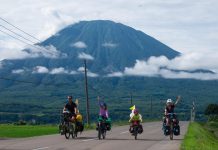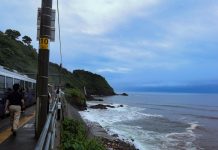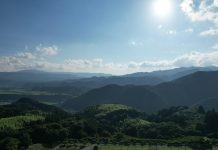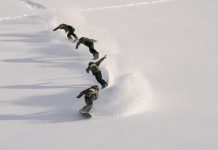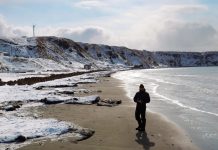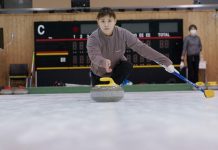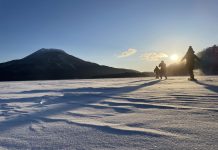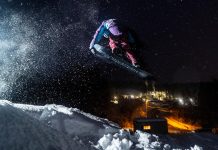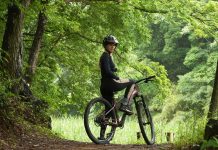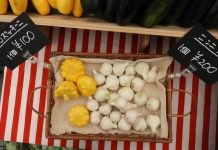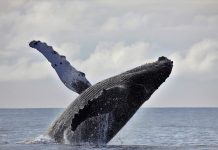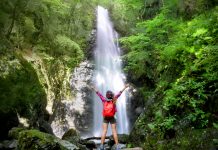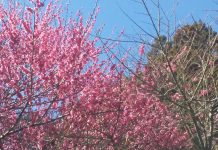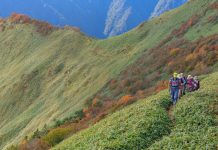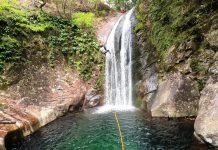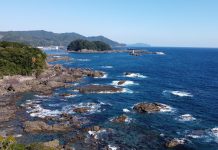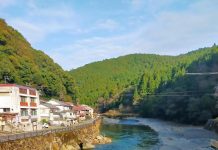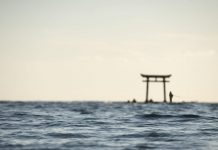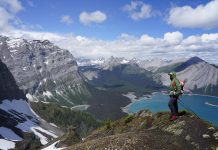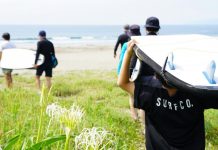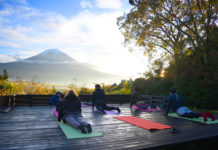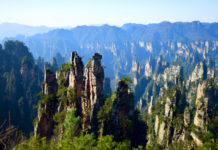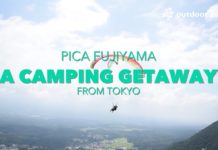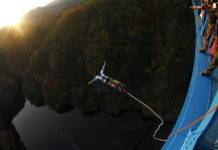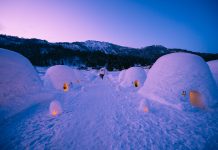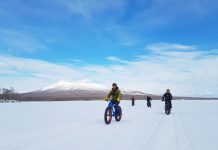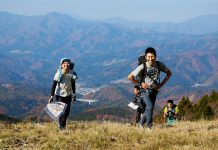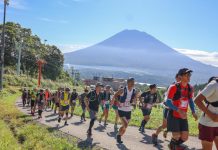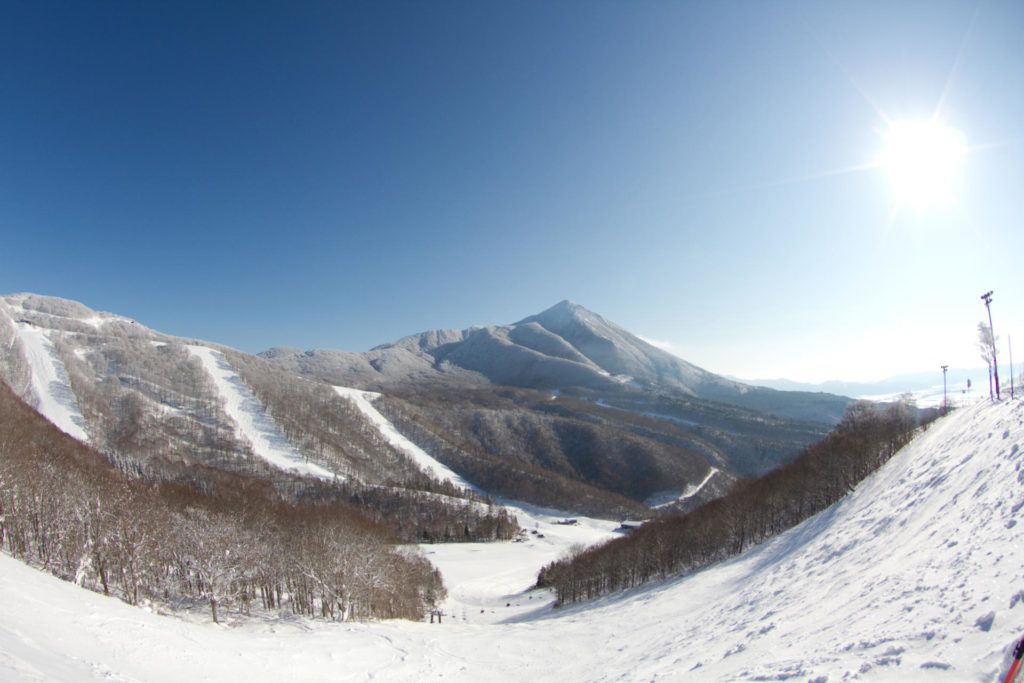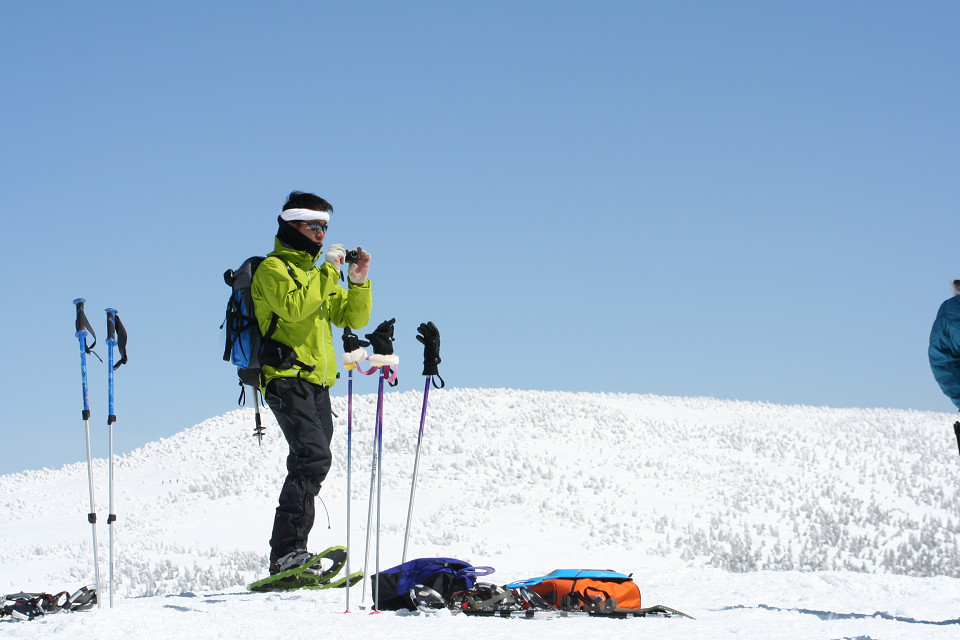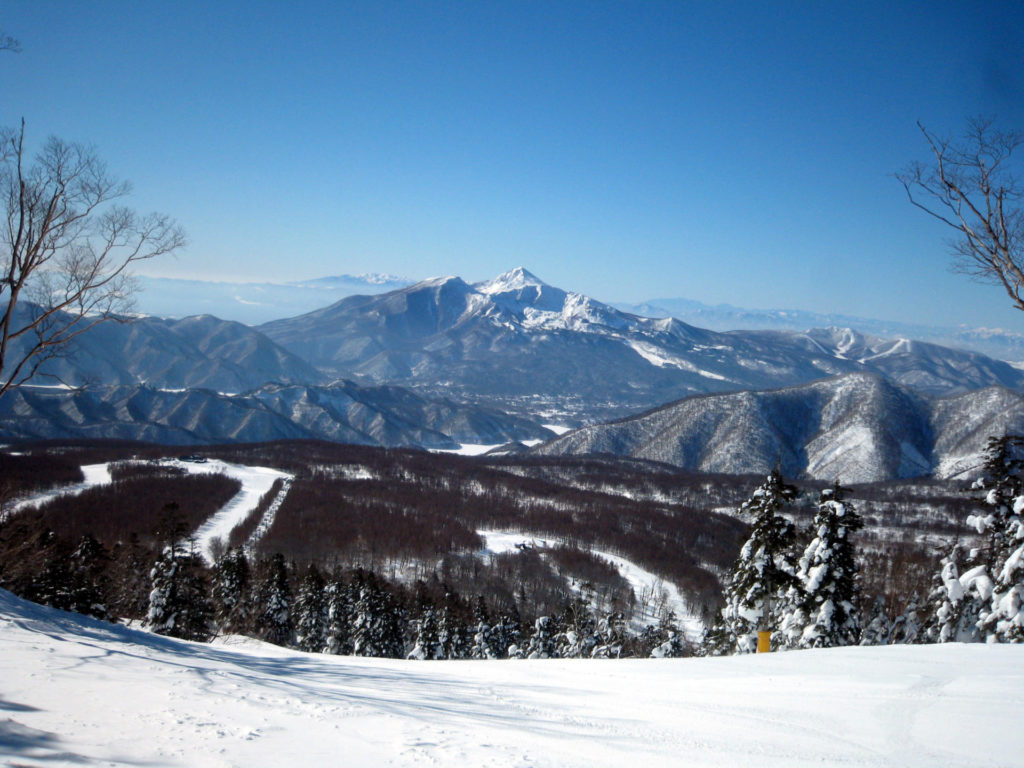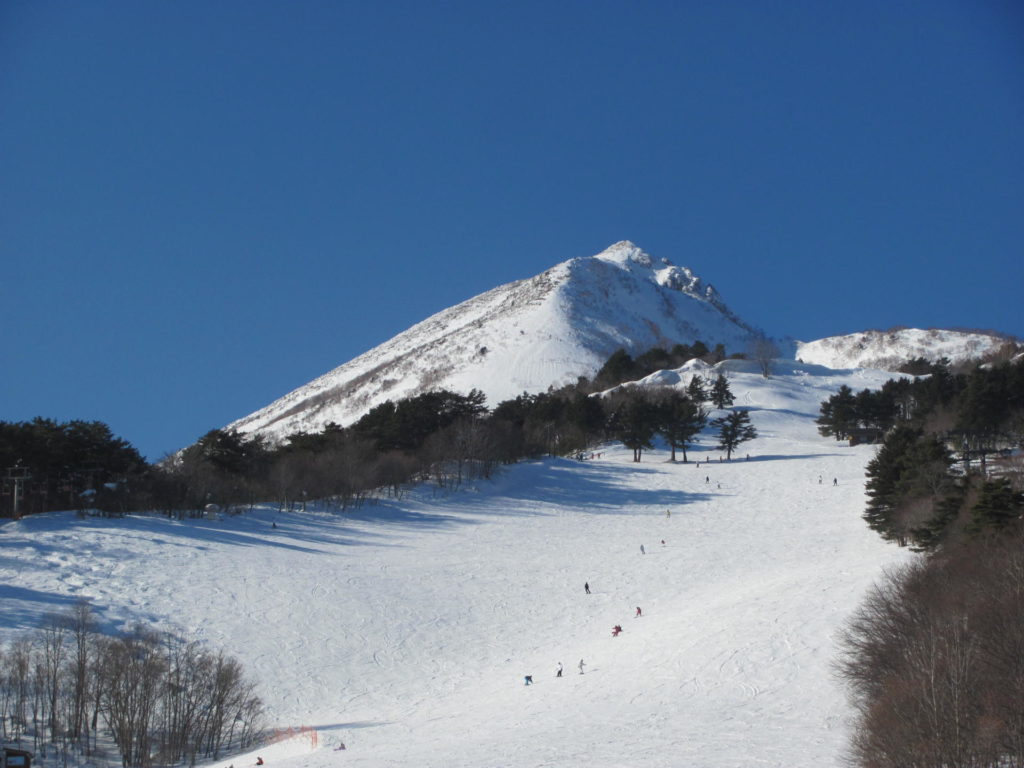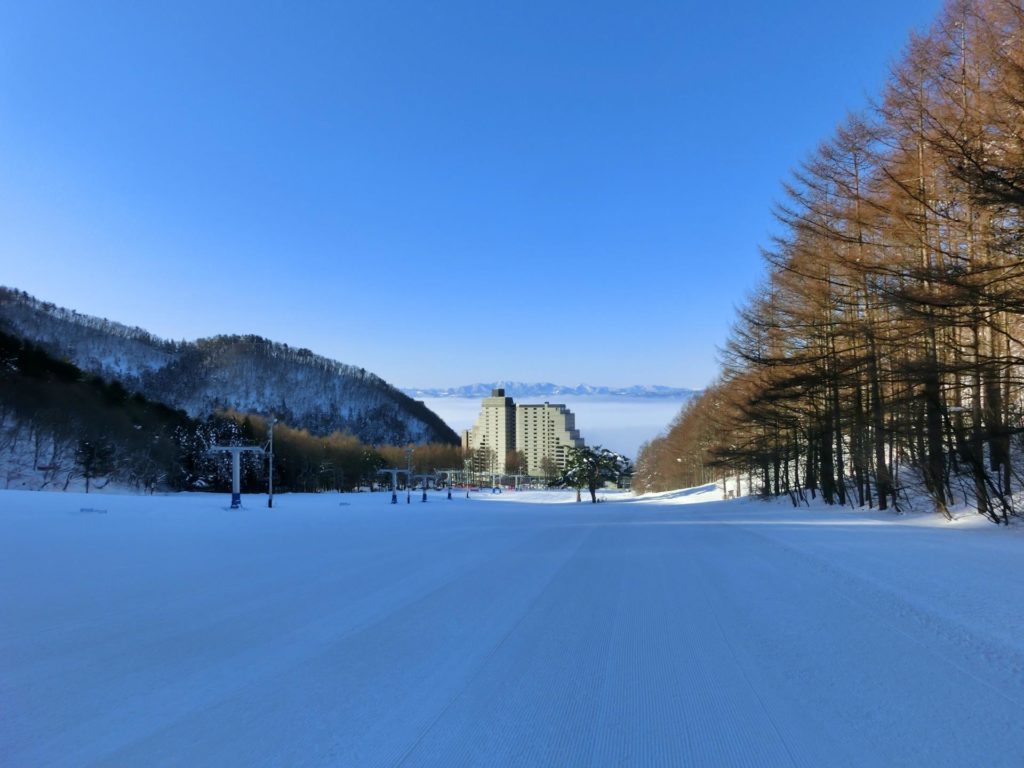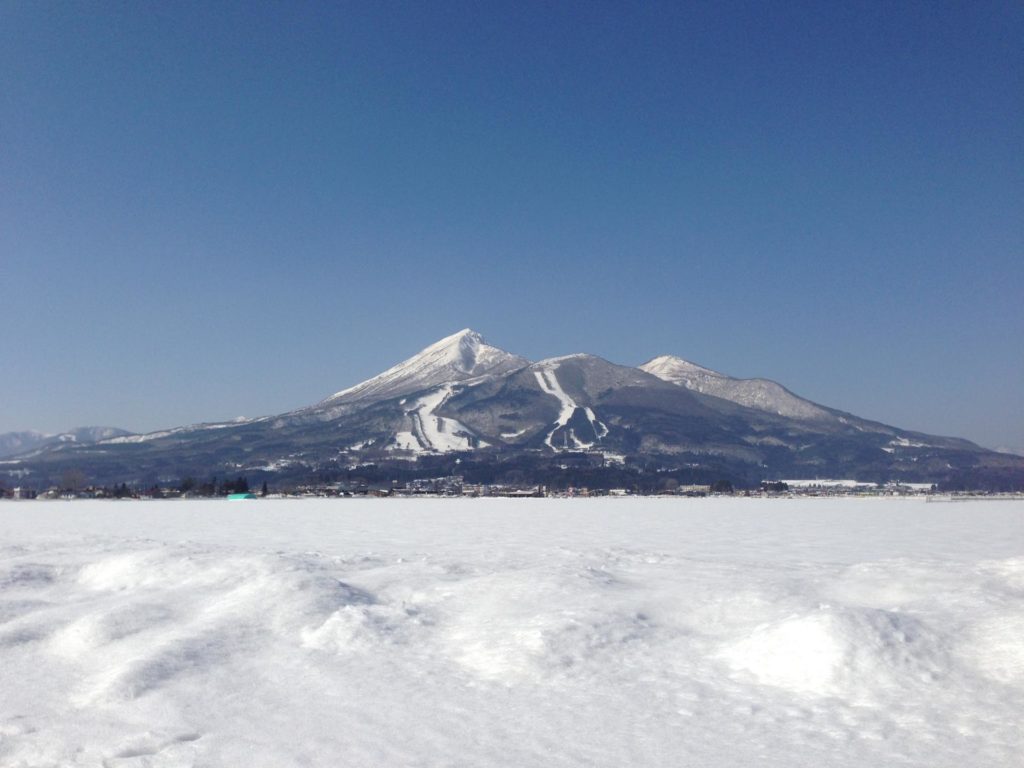Travelers who can get beyond the name will find the mountains in western Fukushima filled with beautiful scenery, excellent ski resorts, appreciative locals and lots of great snow to enjoy this winter.
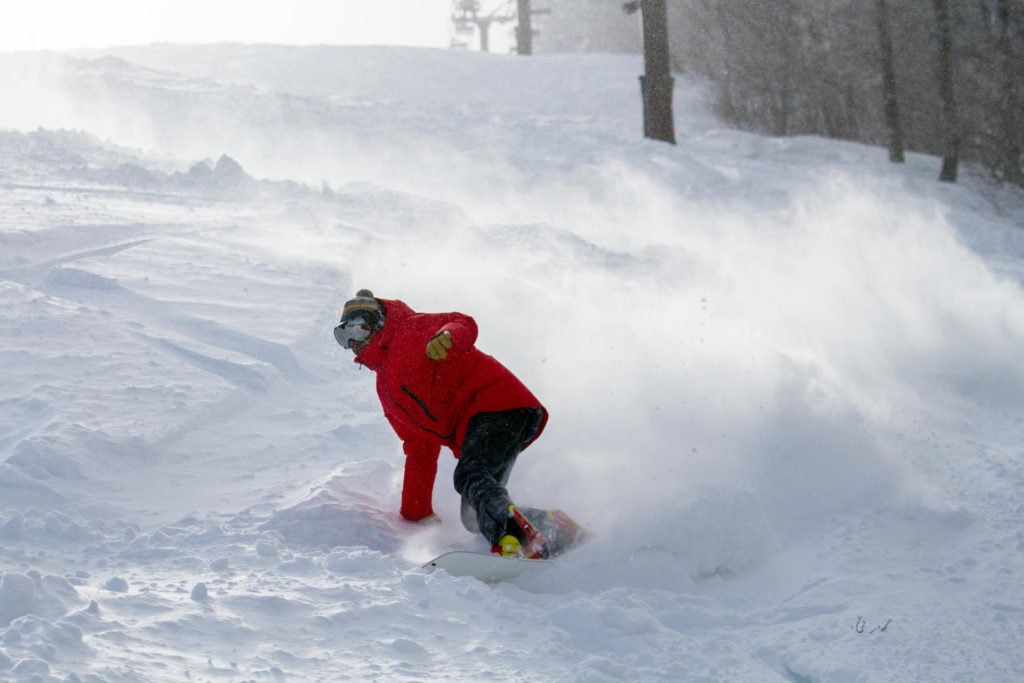
It’s a late fall day as I drive north from my home in Myoko toward Niigata City. The row of volcanoes that make up the Kubiki Alps and other widely spaced mountains have long since given way to the vast rice fields of the Niigata Plain. For many kilometers, only the peak of 634-meter Mt. Yahiko rising off to the northwest, and a distant line of mountains to the east, break the even, flat stretch.
Turning east, just south of Niigata’s capital, things begin to change. As the land slowly begins to rise, formations of swans from Siberia fly in overhead; others already on the ground gather as white speckles across the still-brown fields. The mountains continue to climb, but sharper than at home; angular, heavily wooded.
I’d been in the area before in early spring. I knew the valleys between those steep mountains contain rustic wooden buildings, beautiful winding roads and equally twisting streams and rivers, often accented with flashes of color from descending kayaks.
This is a beautiful, natural part of Japan, and I am thoroughly enjoying the drive. The only dark note to the trip comes from the area’s name: Fukushima.
What’s in a name, anyway? Well, unfortunately for the prefecture, a lot. It’s become infamous because of the Fukushima Dai-ichi Nuclear Power Plant. The facility is down the coast and more than 80 kilometers to the east of my destination in the Urabandai area. Because of what happened in 2011, and the problems that continue, for many “Fukushima” means one thing: nuclear disaster.
Approaching from the west, it’s a much different experience than when I was in the prefecture months after the Great East Japan earthquake and tsunami. On that trip, I drove up from Tokyo, north along the ocean, and the devastation was unending. Here, everything seems…well, normal. Untouched, not at all scary.
I would hear this echoed from everyone I met at the ski resorts here. “We weren’t damaged.” “We didn’t see a rise in radiation.” “We were lucky because of the wind direction and the landsape.” (Especially those protective waves of mountains.) Also universally, “We’d like to welcome more visitors.”
From what I could see, it is well worth a trip to the beautiful winter resorts around Mt. Bandai and Lake Inawashiro, Japan’s fourth-largest body of fresh water, in winter when these beautiful mountains are covered with light snow.
The White Elephant in the Room
It’s not an unqualified recommendation, of course. On the very day I finished this article, TEPCO, the (often deservedly maligned) Tokyo Electric Power Company, began the tricky task of extricating spent fuel rods from one of the damaged reactor buildings. Radiation is a very scary thing for the average person; you can’t see it, it does nasty things if you get too much of it, and it makes possible very big bombs that knock out whole cities in a single boom.
It’s also hard to get any sense of balance about the situation, with TEPCO being dragged into releasing information, hysterical blogs and few sober, scientific sources to make sense of it all.
Time to talk to the locals.
Alts Bandai & Urabandai Nekoma
“I go surfing out here a lot,” says Kei Ishiuchi. “We went out first with a Geiger counter to see if we were safe. Every time we’ve checked, it’s been the same — the figures are the same as they were 50 years ago.”
A self-proclaimed former snowboard bum who spent several years in Jackson Hole, Wyoming, Ishiuchi takes things a little easier now, but surfing on the Fukushima coast, he insists, isn’t too risky.
“I’m married now, and a father,” he says. “I want to know what is safe, and what’s not, because there are places that aren’t safe. But many people here make their living from outdoor things like surfing or skiing. It’s tough for them. So I’d just like to invite people to come and see for themselves.”
He should know. Ishiuchi is the general manager of marketing for Bandai Resort, which includes two ski resorts in the area, Alts Bandai and Urabandai Nekoma Ski Resort. We meet at the Bandaisan Onsen Hotel, and the loquacious Ishiuchi tells the story of his resorts.
“After 3/11, it was terrible — nobody came. But for us, nothing really happened on March 11. Things shook, but there was no damage, apart from the onsen not working quite right for a while (a common post-earthquake problem). When the explosions happened at Dai-Ichi on March 14, we were concerned and took readings of the radiation. But there was nothing unusual.
“Alts is the biggest resort in southern Tohoku,” he continues. “We’re like Montana here — the mountains are big and open, rather than steep, and our snow is really light. Most of Alts Bandai faces south, so it’s bright. Nekoma faces north, so it’s colder, and the powder can be great.”
Ishiuchi remains true to his snowboard bum roots, though. “I’m out on the courses every day, even though I’m manager,” he laughs. “I’m really interested in finding out what people want, and I enjoy interacting with them.”
Like the other resorts here, Alts is self-contained, with a ski area and hotel at the top of a long drive from the town below. It’s great if you like really getting away from it all on a ski trip.
Grandeco
At Grandeco Resort, manager Genta Kanemitsu is quieter than the garrulous Ishiuchi but no less passionate about the area. “I’m really a Tokyo boy (although he lived abroad as a child, and traveled to 22 countries as a backpacking student), but I was looking for a natural place to live,” he says. “I visited several places, but when I got here — well, it’s great!”
He also cites the quality of the snow. “It’s cold, so the snow is good — we get a lot of repeaters. The hotel is at 1,040 meters, and the lifts go up to 1,590. From there, it’s just a short hike up to Mt. Nishidaiten, which has a great view of the whole area.” There are no restrictions on where you ski, he says, the patrol may warn about dangerous spots, but they won’t stop you for skiing in the trees.
“We’re a nice, compact resort,” he says. “We have few international travelers now, so it’s a nice chance for those who do come.”
The Hotel Grandeco, it has to be said, is the most luxurious in the area — the Crown Prince and Princess stayed in the suite.
Before the earthquake hit, the resort brought in about 200,000 one-day skiers annually. “After that it dropped to 110,000,” Kanemitsu says. “We’re back up to 150,000, so we could still use more guests.”
Echoing something mentioned by Ishiuchi, he says the loss of school ski groups has hurt business for all local resorts.
At the same time, this area was seen as a safe place to bring children relocated because of the radiation for some fun. “It nearly made me cry,” Kanemitsu says. “As soon as they got off the bus and saw the sand traps on the golf course, they just ran in and started playing. Kids are supposed to be out digging in the sand, but they hadn’t been allowed outside in months.”
He gives one last tip for prospective visitors: “Come in spring,” he says. “As soon as Japanese people see the cherry blossoms, they stop thinking about skiing, but our season runs late. In April the snow is still good, the sun shines a lot and the weather is nice.”
Inawashiro
Right on the slopes of Mt. Bandai, overlooking Lake Inawashiro, is the ski area of the same name. Inawashiro is a big, well-established 11-lift resort that has hosted International Ski Federation (FIS) competitions. Resort president Hiroaki Higuchi takes head on the issues facing Fukushima.
“For a couple of years now, we’ve decided we aren’t going to be depressed when we talk,” he says. “We’re not down. When we talk, we’re addressing individual skiers and snowboarders. Within the prefecture, people have gotten the message that it’s safe here. But I know families with young children are going to be concerned, so we just accept we can’t change that.”
He is looking to the future and is happy to share his plans. “We’re now two large areas in one,” he says. “One is a real alpine setting, with runs that are at race level (Inawashiro will be hosting Japan’s national high school Inter-high competition this season). The other is more open and gentle, so it’s great for families.”
To attract those families, the area has created the “Re:born Club.” For ¥500, members receive a card that gives them reduced lift ticket prices, and two of the beginner runs are free.
“Skiing is a sport that, once you do it, you’ll love it,” Higuchi says. “So we want to get people skiing —especially kids.”
He admits, as an older resort, they see themselves as a local resort. “Because of that, we haven’t really sold ourselves to the international market,” he says with a smile. “But when they’re ready to come to Fukushima, of course we’ll be ready to welcome them.”
Listel Ski Fantasia
Heading further around the lake to my final destination, I am caught off guard when I get my first glimpse of Listel Ski Fantasia. The first thing I see is a massive pyramid of a hotel, snug up against the tight, triangular peaks, and with no apparent ski slope.
I am met by communications manager Kai Hattori and mogul course shaper/staff and local booster Justyn “Jup” Brown. Soon things are in better perspective. There is one huge, gentle slope at the base, and some pretty steep slopes beyond. Listel is a regular stop on the FIS tour, hosting the moguls and aerials competitions.
They too have stories to tell. “There was very minor damage to the building in the earthquake, but we could tell where the soft soil was — because it collapsed — and where it was firm,” Hattori says. Luckily, the hotel is on very solid ground.
So much so that it found itself completely occupied after the evacuations from the coastal areas.
“We had 800 people living in the hotel, and we just shut down the ski area,” he says.
The 370-room hotel feels like a throwback to the boom years: there is a whole series of swimming pools, outdoor onsen, a huge herb and sculpture garden just in front of the facility. When we climb to the top-floor lounge, Jup just smiles and says, “Nice, huh?,” as he gestures out to the lake stretching out almost to the horizon.
“We have nice, easy slopes, so this is a great place for first timers, and there’s everything a family could want,” Hattori says. “There are steep slopes, too, with the mogul course 42° at its steepest. People can visit other ski areas in the region with our shuttle bus as well.”
Like elsewhere, school trips are down, but repeaters are starting to return.
“We expect higher numbers overall this year; not just locals but also people from Tokyo and Osaka, so there are positive things going on,” Hattori says.
Hiromi Igarashi of NPO Network, an organization involved with tourism in Fukushima, agrees.
“Things have pretty much recovered to normal levels for tourism in Urabandai — except for winter,” she says.
“The earthquake and tsunami had very little effect in the Aizu/Bandai area. It’s a safe area, and we want to get that message out. Schools are reluctant to come, and we understand that but, if others come, the schools will follow.”
They’re particularly targeting young people so, listen up, 22-to-24-year-olds. Twenty-one of the 24 ski areas in the region have become members of a group called “Yuki Maji Fukushima.” If you are between these blessed ages, you ski free on weekdays, so jump on one of the cheap, direct buses from Tokyo. It’s just one more of many reasons to visit Fukushima this winter.

